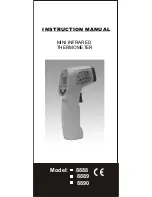
Pneumatic Control Manual
717.1
Repair Parts for Discontinued Products Section
Instruction Bulletin
T-901-A
Issue Date
16B4
© Johnson Controls, Inc.
1
Code No. LIT-7171715X
T-901, T-903 and T-905
Submaster Thermostats
Operation
This series of submaster thermostats is so designed
that the set point may be remotely readjusted by
changing pressure to the readjusting bellows.
(See Fig. 2)
A master-submaster system consists of a primary
controller (master thermostat) and submaster
thermostat so connected that output (master
pressure) from the master thermostat readjusts the
set point of the submaster thermostat according to a
predetermined schedule. A dial on the submaster
thermostat also provides manual selection of set
point at the instrument. These thermostats are
available with liquid filled remote-bulb-and-capillary,
insertion and immersion measuring elements.
Control Action
These thermostats are available in two-position and
proportional action models. Both models are
furnished either direct or reverse acting. A direct
acting thermostat increases control pressure when
temperature increases. A reverse acting thermostat
decreases control pressure when temperature
increases. A simple change of pivots converts the
thermostats from one action to the other. See Fig. 1
and Table I.
Readjusting Action
Depending on the pivots used, an increasing master
pressure either raises or lowers the set point. When
increasing master pressure raises set point, the
thermostat has direct readjustment. When increasing
master pressure lowers set point, the thermostat has
reverse readjustment.
Sensitivity
Sensitivity of a pneumatic thermostat is defined as
the change in the control air pressure per unit change
in temperature. It is expressed as psi per degree.
Sensitivity of this series is adjustable from 1/8
through 5 psi per degree by moving a slider located
on the control mechanism channel.
Differential
Differential of a two-position controller is defined as
the degrees temperature change required to actuate
the relay. The sensitivity adjustment described above
becomes a differential adjustment in two-position
action. Differential is adjustable 2 through
30 F degrees.
Operation of Control Mechanism
The liquid in the measuring element expands or
contracts with temperature changes. This movement
is transmitted to the control port lid through a system
of levers as shown in Fig. 2. Output pressure to the
controlled device varies with control port lid
Fig. 1: T-901 Series Submaster
Thermostat Showing Pivot Locations






















